Bracken fern: distribution in nature, cultivation at home and use in everyday life
Almost every species of fern is associated with some kind of legend and mystery. Not even an ordinary bracken passed. It is believed that those who eat the bracken, they get better in their personal and financial spheres, the person becomes more respected. There are many recipes with the addition of bracken. But you should be careful because of its toxicity. Before use, the fern must be thoroughly cleaned of unblown leaves, rinsed and boiled.
Content:
- Variety of ferns in nature
- Description of the species common bracken
- Fern propagation
- Growing and caring for a fern
- The use of bracken fern in cooking and medicine
Variety of ferns in nature
In total, there are approximately 300 genera and 10 thousand species of ferns in the plant kingdom. Some of them grow independently, and some exclusively on other trees. Ferns have a developed root system, and the plant itself can be from a few centimeters to several meters.
It will take a lot of time to list all types of fern, because each of them differs in appearance and in the necessary growing conditions.
In the climate of our country, the most common:
- Orlyak ordinary.
- Common ostrich.
- Female kochedyzhnik.
- Shieldworm.
- Nephrolepis.
Common bracken reaches a height of 70 cm, it grows on dry, poor soils. The name comes from the similarity of fern leaves with eagle feathers, the root system is well developed, branched. For animals, bracken is poisonous plant, but by people it is widely used in folk medicine and even cooking.
The common ostrich or ostrich feather also has similar properties to the feathers of an ostrich. Lush leaves grow one and a half meters in length. They open only in spring, in warm weather, while in the cold season, the leaves curl up into a cocoon.
The root system goes deep into the ground, so when growing the ostrich at home, the soil must be periodically mulched and loosened.
Female kochedzhnik:
- It differs in dissected leaves, depending on the variety, the height of the fern can range from 30 to 70 cm.
- The rhizome is thick, shallow.
- Without a transplant, a kochedyzhnik can exist for more than 10 years.
Male fern (shield):
- Has one legend, it was believed that this plant served as a shield for man, protected him from grief and poverty.
- His rhizome is powerful, thick, grows obliquely.
- The rhizome rises above the ground, it is covered with multiple dark-colored scales and leaf petioles, there is no above-ground stem.
Nephrolepis is the most common home-grown fern. In cultivation, it is unpretentious, depending on the type and variety of nephrolepis, the appearance of the wai will also differ. The plant has a rather long light green decorative leaves... Below wai there are multiple spores, with the help of which the fern reproduces.
In addition, are grown:
- Maidenhair.
- Asplenium.
- Platizerium.
Description of the species common bracken
Common bracken - is one of the species of the large genus Bracken, it is a perennial herbaceous fern, which most often can be found in the forest... In terms of its size, it stands out among other plants. It cannot be confused with another type of fern, since its leaves have curved edges, and the sporangium goes along a longitudinal row.
The bracken does not grow in heaps, the plants prefer to be at least 1 meter apart, although their roots are still intertwined with each other underground.
In our climate, the fern reaches a height of 60-70 cm, only occasionally it grows more than 1 meter. In the Caucasus, there are such representatives when a person can become full-length under the leaves. The bracken is widespread throughout the world, it grows both in the south and in the north, it does not tolerate only deserts, steppes and arctic frosts. It can be found in the European part of Russia, the Urals, Siberia and the Far East.
Common bracken grows only in light forests, such as pine or birch.
From the forest, it can spread to the territory of meadows and forest edges, grow in the territory where there were forest fires, etc. Bracken will grow best on poor, light soils, less often on limestone. If a fern has climbed into the mountains, then it will not "crawl" above the forest belt.
The bracken leaf is called frond, it is very large, dense, has a specific smell. Below you can find sporangia in which spores "live". Spores are located in groups, these groups are located along the edge of the frond and are protected from the external environment by the folded edge of the leaf. It will not be possible to grow bracken at home, it can only be grown in a garden, in conditions similar to natural ones. It easily tolerates dry soil, but the main thing is to keep track of it so that it does not grow over the entire garden.
Fern propagation
Ferns reproduce in several ways:
- Seeds.
- Shoots.
- Accessory kidneys.
- By dividing the bush.
- Rhizome.
The easiest way to grow a fern is by dividing an already mature plant into several parts. To get a large amount of planting material, you can disassemble the bush into separate outlets.
The best breeding season for ferns is spring, but the weather is still cool.
Breeding features:
- After transplanting, the plant must be provided with a sufficient amount of moisture.
- If the summer turned out to be cool, then the division of the bush can be carried out in August.
- Also, the breeding method depends on the specific type of fern.
- There are viviparous plants, they form brood buds right on their leaves.
- At home, the easiest way to propagate asplenium is with the help of bulbs and brood buds.
- Larger species are propagated by dividing the bush; pteris, pellea, leaflet, nephrolepis, maidenhair are suitable for these purposes. For example, nephrolepis is easy propagate by shoots.
- Under natural conditions, they spread independently when the shoots, lying on the ground, take root. Then these rooted areas are separated from each other and seated separately.
- Tubers can be found on underground shoots, they easily detach and take root in wet moss.
- If a particular fern species has only one growth point and there are no additional rosettes, then you can try to propagate the plant with spores. This is a natural process, so it is rather difficult to repeat it at home.
Fern spores are somewhat similar to the seeds of ordinary plants, but they are much smaller than the latter.
The fern is an asexual stage in the entire life cycle of a plant. When the pores fall off, germinate and form an embryo, it will be considered the beginning of the sexual stage. The embryo will contain male and female reproductive organs, their reproductive cells will merge and form a zygote, from which an adult plant will already grow.
For germination of the embryo, high air humidity and a moist substrate are required.When the spores are ripe, you need to collect and sow them yourself. Collecting disputes is also not so easy. The fern leaf is cut and placed in a dry, warm place. Shake the leaf periodically until all spores have been removed.
Growing and caring for a fern
For growing an embryo from spores, a special substrate is selected, it consists of sifted peat, sterilized soil, charcoal in a ratio of 1: 2: 1.
The pot must be well cleaned and sterilized, the substrate must be crushed. Finely crushed brick and spores are poured on top. There should always be water in the pallet, it is advisable to cover the pot with glass or polyethylene. The temperature of the room in which the fern is grown should be within 21 degrees, the pot is placed in a dark place.
Next steps:
- After about a month, small overgrowths will appear, which will cover the soil with a carpet.
- To ensure the reproductive process for the fern, it is necessary to maintain a water film, that is, the surface should not be allowed to dry.
- To avoid the appearance of parasites, all this is done under glass or film.
- Two months later, the first leaves will appear.
- From this moment, the shelter can be removed, the leaves must get used to new, more arid conditions.
- The room temperature during this period should also be around 21 degrees.
- When the ferns get stronger, they will need to be transplanted into a heather or peat mixture in ditches.
- Only then are the best sprouts selected and transplanted into pots.
In a fern, you can easily determine the growth rhythm. The apical bud has a supply of wai for the next couple of seasons. If the conditions for the fern are unfavorable, then this will affect only after a few years. Vayi is easy to damage, if this happened, then they will recover only the next season.
At home, the fern should be placed in partial shade; sunny, warm windowsills are extremely contraindicated. The air should be kept humidified as often as possible.
You need to water the plant as often as possible, if the earthen lump turns out to be dry, then this will immediately lead to the death of wai. To reanimate such a plant, the dead parts must be cut off and transferred to a more humid place, well watered. But the plant cannot be poured either, this can lead to decay of the roots.
The soil should be light, poor, with the addition of sand, drainage should be laid out on the bottom of the pot.
Once every three weeks, during the period of active growth, the fern is fed. Fertilizer amount, which is indicated on the package is divided by two.
The use of bracken fern in cooking and medicine
For many, at least it will be strange to hear that ferns can be eaten. Although in East Asia they are not just eaten, but considered a delicacy. Fern is most loved in Japan.
Previously, fern was used as a substitute for bread, but now its nutritional properties have been forgotten. Bracken is rich in various vitamins; it can replace vegetables and fruits in the autumn.
Fern rhizomes are half starch, so it is advisable to use them in brewing. Pickled leaves are somewhat reminiscent of mushrooms in taste.
Most often, leaf petioles are eaten, if a shoot is used, then only in the earliest period of its growth, until it reaches a size of more than 25 cm. It is cut off while it is in a twisted form. Shoots are not eaten raw: they are boiled, dried or salted.
A large number of medicinal properties fern allows its use in folk medicine, among them:
- Antispasmodic.
- Sedative.
- Anti-inflammatory.
- Pain reliever.
- Antipyretic.
- Healing.
- Choleretic.
- Diuretic.
- Hypotensive.
- Antimicrobial.
- Hemostatic.
The following diseases can be treated with the help of a bracken:
- Bronchitis.
- Dry pleurisy.
- Cold.
- Noise in ears.
- Jaundice.
- Radiation sickness.
- Convulsions.
- Ulcers.
- Hemorrhoids.
- Rheumatism.
- Diarrhea.
- Eczema.
- Joint pain.
The tannins and amino acids that make up bracken shoots are useful for treating bowel diseases. From the leaves, you can prepare infusions and decoctions and use them for worms and coughs.
Bracken roots are used to prepare tinctures for joint aches, rickets.
It is also indispensable for skin diseases, non-healing wounds, abscesses and eczema. Adding bracken to the bathrooms can speed up the healing of ulcers and relieve rheumatism pain. Thus, the fern is used not only for decorative purposes, but also for medicinal and culinary purposes. Gardeners will get real pleasure by growing a fern on their site.
More information can be found in the video.



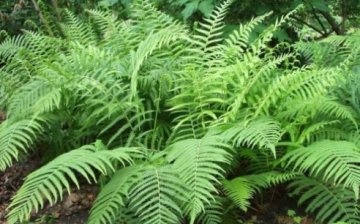
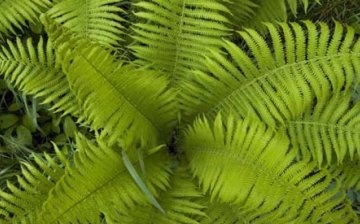
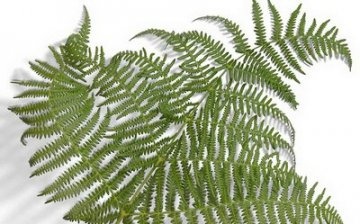
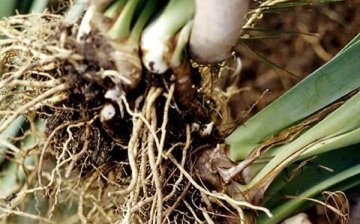
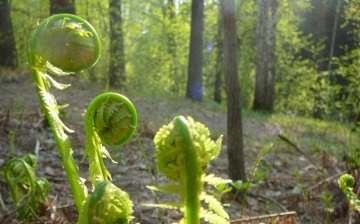
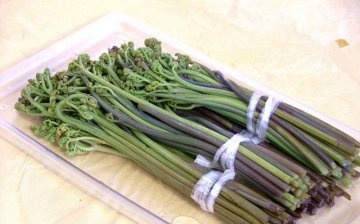






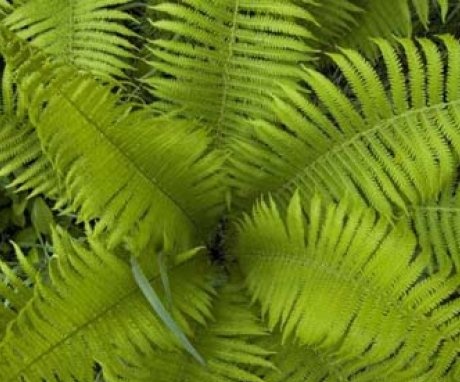
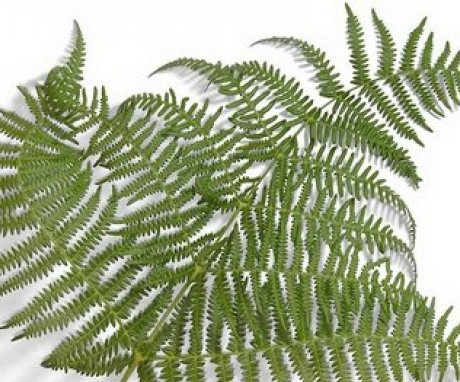
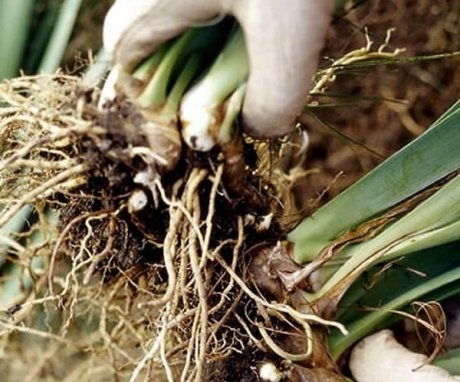
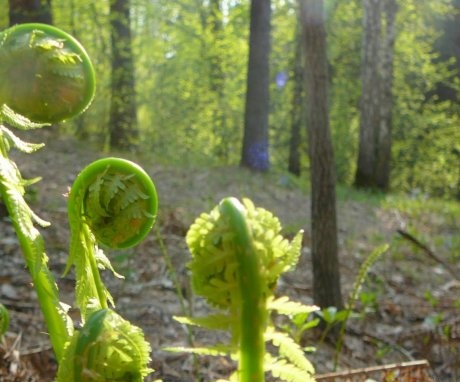
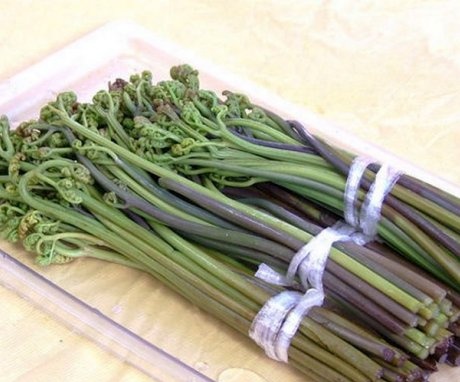
I didn’t know that fern is used in medicine, but it’s not the first year that I have been sourcing it. Relatives live on Sakhalin and it was from there that they brought pickled stems to me. The taste is unusual, but I liked it, since that time I began to grow ferns at home. It can be not only cupped, but also salted and pickled. It turns out very tasty when mixed with cucumbers. You can also dip it in boiling water for a second, then fry it with spices and garlic - it turns out delicious and healthy!